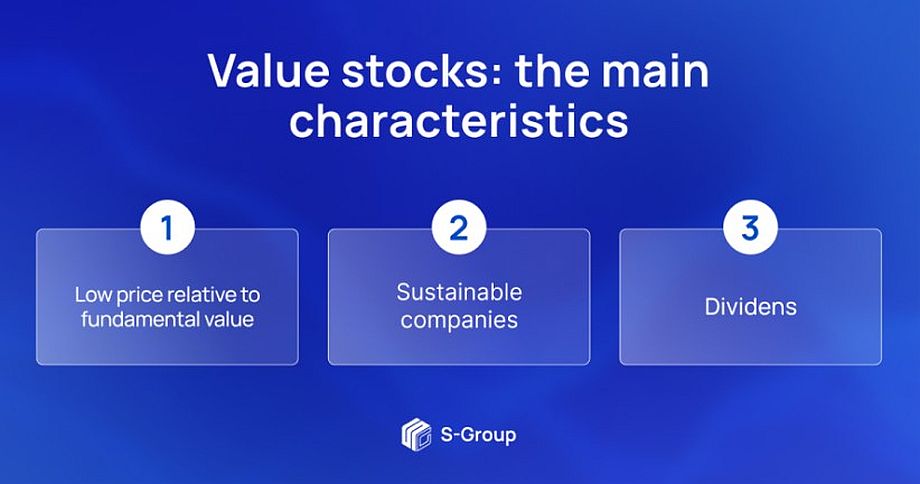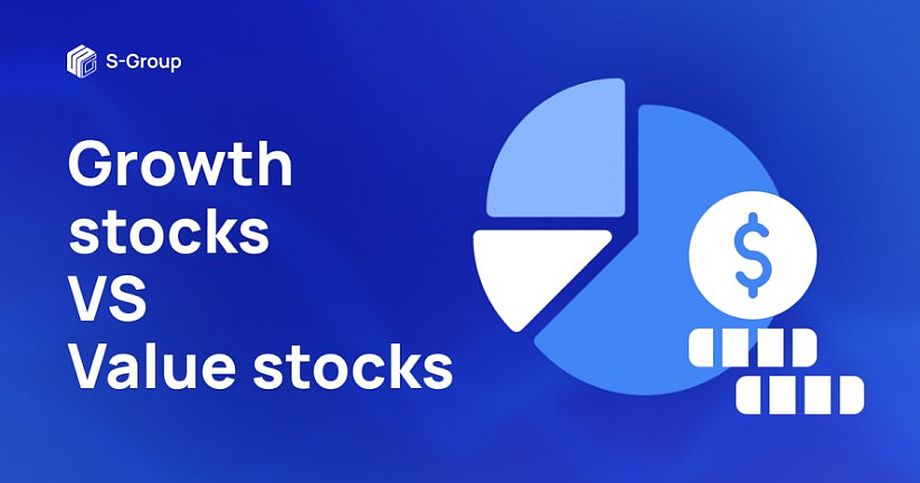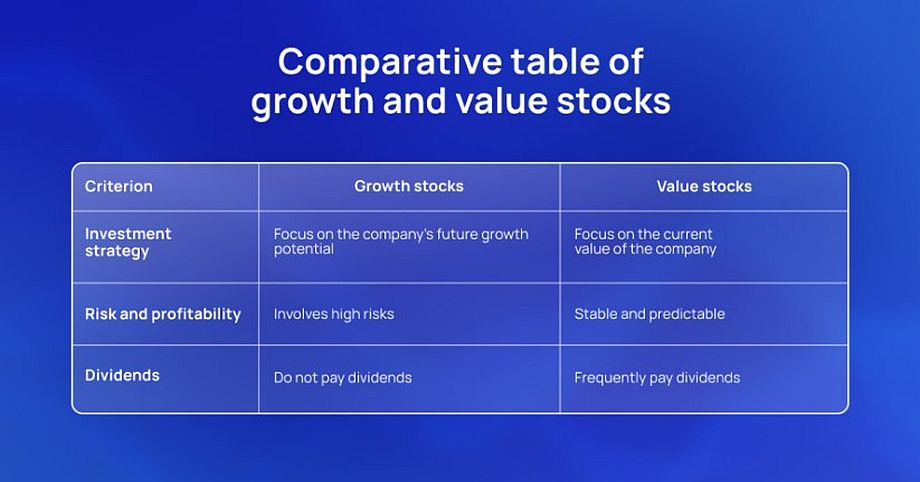Value stocks and growth stocks
In the financial markets, there are many different types of stocks available for investors to buy and sell. Two common types of stocks that market participants often encounter are value stocks and growth stocks.
In this article, we will look at the main differences between these two types of stocks and explore their characteristics in more detail.
What are value stocks and their main characteristics
Value stocks are stocks of companies that are considered undervalued by the market. These stocks usually have a low price relative to their fundamental value. By purchasing value stocks, investors hope that the market is undervaluing these companies at this stage and that their share price will increase in the future.
Value stocks are attractive to those who seek stability and sustainability in their investment portfolios. Let’s take a closer look at the characteristics and features of this type of stock.
Low price relative to fundamental value
A low price situation can occur when a stock temporarily declines in value due to negative news or pessimistic market sentiment. Buyers of value stocks believe that over time the market will recognize the true value of the company. This can lead to a higher stock price and possible profits for investors.
Sustainable companies
Value stocks are often owned by stable companies that have stable financials. Investors may be attracted to the stability and predictability of these companies‘ returns. They prefer to invest in companies with long-term growth potential based on analyzing fundamentals such as earnings, dividends, assets, and the company’s debt level.
Dividends
Value stocks often come with dividends, due to the stable financial performance of the issuing companies. Companies often have a steady stream of income and see dividend payments as a way to reward their shareholders.
Dividends can be regular payments based on a company’s earnings. They are usually paid at a certain frequency, such as every quarter or year. Dividends allow investors to earn a return on investment even when the share price does not rise or changes little.
What are growth stocks and their main characteristics
Growth stocks are stocks of companies that are experiencing high growth rates. Investors expect them to continue to grow in the future and increase their return on investment. These companies often operate in industries with high growth potential, such as technology, biotechnology, renewable energy, and artificial intelligence.
Let’s take a look at the key characteristics of growth stocks that make them an attractive investment tool.
High growth rates
Growth stocks differ from average market stocks in that the value of the issuing company shows high growth rates and boosts the market price of the stock. Investors who buy growth stocks focus on the ability to rapidly increase earnings and market share.
Innovative companies
Growth stocks typically refer to companies that are in innovative and fast-growing industries. They often focus on developing groundbreaking products, services, and technologies that can impact an industry or lead to significant change.
Growth stock investors see the potential for high returns in these companies because successful innovation can lead to significant earnings growth and inflows of new investment. They believe in the companies‘ ability to succeed and take a leading position in the market.
Lack of dividends
Unlike value stocks, growth stocks usually do not pay dividends. This is because companies in the growth stage prefer to invest profits to further develop their business rather than pay dividends.
These companies tend to capitalize on growth potential and accelerate the development of new products, research and marketing. This can lead to a higher return on share price growth, but the lack of dividends can be a disadvantage for investors looking for stable income.
Differences between value stocks and growth stocks
Investing in value stocks and growth stocks differs in approach and several key characteristics.
Investment strategy. Investors who purchase value stocks most often focus on the current value of the company and its fundamentals. While growth stock investors focus on the company’s future growth potential.
Risk and profitability. Growth stocks typically involve higher risks because they depend on the company’s future success and ability to sustain high growth rates. Value stocks can be more stable and predictable, which may be accompanied by lower returns.
Dividends. Value stocks are often accompanied by dividends, providing investors with a steady income from their first investment. Growth stocks typically do not pay dividends, as companies prefer to invest profits in their growth and development.
Summary
Buying value stocks and growth stocks represents a different approach and investment strategies, each with its own unique characteristics.
Value stocks focus on undervalued companies with sustainable financial performance and dividend potential. Growth stocks, on the other hand, focus on companies with high growth potential, high earnings growth rates and innovative products.
When choosing between these two types of stocks, investors should consider financial goals, risk level and investment expectations. It is important to remember that it is impossible to accurately forecast the movements of the markets and the growth of a particular company. Therefore, it is necessary to carefully study the markets and react to market changes in time.




